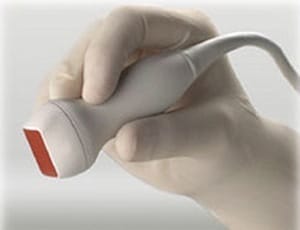Management of patients on injectable treatments for tuberculosis

Hospital-based care was compared to a community-based approach for patients on TB retreatment in which ‘guardians’ (patient-nominated lay people) were trained to deliver injections to patients at home” Cohen et al (2018). Abstract: BACKGROUND: Patients being treated for recurrent or multidrug-resistant tuberculosis (TB) require long courses of injectable anti-tuberculous agents. In order to maintain strong […]
Nursing students are a vulnerable group at risk of needlestick injury

The aim of this study is to determine the most susceptible job group for needlestick injury (NSI) reported in a newly established teaching medical institute in the Western part of Rajasthan, India” Hada et al (2018). Abstract: BACKGROUND: Occupational exposure to bloodborne pathogen is a significant risk to health-care workers. In any teaching hospital apart […]
Chlorhexidine-coated surgical gloves influence the bacterial flora of hands

Previously, we were able to demonstrate that a novel antimicrobial surgical glove coated chlorhexidine-digluconate as the active ingredient on its inner surface was able to suppress surgeons’ hand flora during operative procedures by a magnitude of 1.7 log10 cfu/mL” Suchomel et al (2018. Abstract: Background: The risk of SSI increases in the presence of foreign […]
Paradigm shift associated with hand hygiene standards

Healthcare-associated infections (HAI) affect hundreds of millions of individuals worldwide. Performing hand hygiene is widely accepted as a key strategy of infection prevention and control (IPC) to prevent HAI, as healthcare workers’ contaminated hands are the vehicle most often implicated in the cross-transmission of pathogens in healthcare” Vermeil et al (2018). Abstract: Healthcare-associated infections (HAI) […]
Double intraosseous access has the potential to augment resuscitation

Double anatomic site IO catheter placement has the potential to augment resuscitation in cases where vascular access is challenging. We sought to compare flow rates and complications among 4 single and double anatomic site transfusion strategies in a swine model of hemorrhagic shock” Sulava et al (2018). Extract: “The American College of Surgeons Advance Trauma […]
Study of four intraosseous blood transfusion strategies

Intraosseous (IO) access is used by military first responders administering fluids, blood, and medications. Current IO transfusion strategies include gravity, pressure bags, rapid transfusion devices, and manual push-pull through a three-way stopcock” Auten et al (2018). Abstract: BACKGROUND: Intraosseous (IO) access is used by military first responders administering fluids, blood, and medications. Current IO transfusion […]
IV survival rates between standard long intravenous lines and extended dwell catheters

Of the 150 million IVs placed annually in the US, 10-30% of ED patients are classified as having difficult vascular access (DVA)” Shotkin et al (2018). Extract: “Establishing functional peripheral intravenous (IV) access is a vital step in providing care in the emergency department (ED). Of the 150 million IVs placed annually in the US, […]
Impact of ultrasound guided-central venous access training on CLABSI rates

To address this limitation, we designed and conducted a standardized training course and a performance-based competency examination for all residents at a single institution and assessed the impact on the resident CLABSI rate” Lyon et al (2018). Extract: “Prior research has examined methods and processes for the teaching of ultrasound-guided central venous access (USGVA). None […]
Transfusion reactions and consequences of mismatched blood components

This article will outline the validated methods of cross-matching in the laboratory setting. We will also discuss transfusion reactions and consequences of transfusion of inappropriate or mismatched blood components” Sandham and Altemimi (2018). Abstract: Cross-matching of blood components to the patient’s blood is mandatory to ensure the safe transfusion of suitable blood components in a […]
Scenario-based simulation health care education for hand hygiene compliance

Our training course had a positive effect on hand hygiene. This study is the first effective scenario-based simulation health care education on hand hygiene and control of health care–associated infection” Nakamura et al (2018). Abstract: Background: Simulation health care education is widely used in medical education and has great potential. However, scenario-based simulation health care […]
Ultrasound guided IV insertion curriculum for emergency medicine trainees

Ultrasound-guided IV (USGIV) insertion is a safe and effective procedure to obtain access in DIVA patients; however, at our institution, most residents receive only informal instruction” Amick et al (2018). Extract: Establishing venous access in difficult IV access (DIVA) patients is a Accreditation Council for Graduate Medical Education (ACGME) milestone for emergency medicine trainees. Ultrasound-guided […]
Safety of midline catheter placement in the emergency department

The purpose of our study was to evaluate the feasibility and safety of midline catheter placement in the emergency department, and the potential complications of placement” Eraso et al (2018). Extract: “The advent of ultrasound and ultrasound-guided IVs have markedly increased the possibilities of peripheral access for the emergency department (ED). Where there were previously […]
Composition of biofilm covering the surfaces of Mahurkar Maxid and Palindrome catheters

The aim of this work was to study the composition and distribution of the film covering the surfaces of Mahurkar Maxid and Palindrome catheters, which were removed from the body of long-term hemodialysis patients” Nycz et al (2018). Abstract: PURPOSE: The vascular cannulation is associated with a number of complications. The aim of this work […]
Procedural risk attributable to internal jugular, subclavian, and femoral central venous access

Central venous catheter (CVC) complication rates reflecting the application of modern insertion techniques to a clinically heterogeneous patient populations are needed to better understand procedural risk attributable to the 3 common anatomic insertion sites: internal jugular, subclavian, and femoral veins” Bell et al (2018). Abstract: BACKGROUND: Central venous catheter (CVC) complication rates reflecting the application […]
Training for ultrasound-guided vascular access to small vessels in neonates

Critically ill neonatal and pediatric patients often require central vascular access. Real-time ultrasound guidance for central venous catheterization is beneficial. Because the diameter of central veins is much smaller in neonates than in adults, extensive training is needed to master the visualization and catheterization of central veins in neonates” Wagner et al (2018). Abstract: OBJECTIVES: […]
Bedside peripherally inserted central catheter placement in PICU patients

To create a bedside peripherally inserted central catheter service to increase placement of bedside peripherally inserted central catheter in PICU patients” Conlon et al (2018). Abstract: OBJECTIVES: To create a bedside peripherally inserted central catheter service to increase placement of bedside peripherally inserted central catheter in PICU patients. DESIGN: Two-phase observational, pre-post design. SETTING: Single-center […]
How to calculate optimal PICC insertion length in neonates

The tip location of PCVCs should be checked by an X-ray after the procedure. The present study aimed to determine an equation to estimate the optimal insertion length of PCVCs in neonates prior to the procedure” Chen et al (2018). Abstract: BACKGROUND: In neonatal intensive care units, a percutaneous central venous catheter (PCVC) is inserted […]
Impact of chlorhexidine gluconate bathing on skin bacterial burden of neonates

CHG bathing reduces skin bacterial burden, but burden returns to baseline after 72 h” Johnson et al (2018) Abstract: OBJECTIVE: To assess the impact of chlorhexidine gluconate (CHG) bathing on skin bacterial burden in neonates. STUDY DESIGN: In this prospective observational study, arm and groin skin bacterial growth was measured in 40 CHG-exposed and nonexposed neonates […]
Neonatal PICC placement complicated by neonatal lymphedema

Percutaneous intravenous central catheter (PICC) complications are not common and generalized edema and anasarca in neonates as a complication of PICC malposition is even rarer” Kylat et al (2017). Abstract: Percutaneous intravenous central catheter (PICC) complications are not common and generalized edema and anasarca in neonates as a complication of PICC malposition is even rarer. […]
What is the CLABSI reduction impact associated with different economic settings

The preventable proportion of healthcare-associated infections (HAIs) may decrease over time as standards of care improve. We aimed to assess the proportion of HAIs prevented by multifaceted infection control interventions in different economic settings” Schreiber et al (2018). Abstract: OBJECTIVE: The preventable proportion of healthcare-associated infections (HAIs) may decrease over time as standards of care […]
Closed system drug-transfer device use in antineoplastic hazardous drugs

Results of a study to evaluate the effectiveness of a recently introduced closed system drug-transfer device (CSTD) in reducing surface contamination during compounding and simulated administration of antineoplastic hazardous drugs (AHDs) are reported” Bartel et al (2018). Abstract: Purpose: Results of a study to evaluate the effectiveness of a recently introduced closed system drug-transfer device […]
Cuffed-tunnelled central venous catheter insertion in pediatric patients

To summarize the characteristics of cuffed-tunneled catheters insertion and investigate the values of cuffed-tunneled catheters in pediatric patients” Wang et al (2018). Abstract: Objective: To summarize the characteristics of cuffed-tunneled catheters insertion and investigate the values of cuffed-tunneled catheters in pediatric patients. Methods: Between March 2015 and July 2017, all the pediatric patients who received […]
Relationship between arterial and central venous blood gas values

The most straightforward method of ascertaining arterial PO2, PCO2, and other components of blood gas is to measure them directly from a blood sample. In situations in which arterial puncture cannot be achieved or may be technically difficult, the venous blood sample can be used” Valizad Hassanloei et al (2018). Abstract: BACKGROUND: The most straightforward […]
Easy IJ an alternative IV for patients with difficult vascular access

The peripheral internal jugular (IJ), also called the “easy IJ,” is an alternative to peripheral venous access reserved for patients with difficult intravenous (IV) access” Zitek et al (2018). Abstract: INTRODUCTION: The peripheral internal jugular (IJ), also called the “easy IJ,” is an alternative to peripheral venous access reserved for patients with difficult intravenous (IV) […]
Compliance central line associated bloodstream infection prevention guidelines

The purposes of this study were to (1) assess compliance with the CLABSI prevention guidelines, (2) assess the predictors of compliance, and (3) investigate the effect of compliance on the rate of CLABSI and related mortality” Aloush et al (2018). Abstract: AIMS: The purposes of this study were to (1) assess compliance with the CLABSI […]
Taurolidine-citrate line locks prevent recurrent CLABSI

Taurolidine-Citrate locks significantly reduced the rate of CLABSI, particularly Gram negative organisms without adverse events” Clark et al (2018). Abstract: This study describes a successful, targeted intervention in central venous access device routine care, to decrease central line associated bloodstream infection (CLABSI). Taurolidine-Citrate locks significantly reduced the rate of CLABSI, particularly Gram negative organisms without […]
What is clinician comprehension of central-line associated bloodstream infection?

We present the first psychometric evaluation of a preliminary scale that assesses clinician comprehension of CLABSI quality metric data” Govindan et al (2018). Abstract: BACKGROUND: Central line-associated bloodstream infections (CLABSI) are associated with significant morbidity and mortality. This condition is therefore the focus of quality initiatives, which primarily use audit and feedback to improve performance. […]
CLABSI rates associated with hemodialysis patients

Our goal was to compare relative bloodstream infection rates of patients with and without catheters as a quality parameter among the facilities providing hemodialysis” Brown et al (2018). Abstract: BACKGROUND AND OBJECTIVES: Bloodstream infection rates of patients on hemodialysis with catheters are greater than with other vascular accesses and are an important quality measure. Our […]
CLABSI prevention best practice bundles improved over time

A national survey conducted in 2012 revealed that the rates of regular use of many evidence-based practices to prevent device-associated infections were low in Japanese hospitals. We conducted a second survey 4 years later to evaluate changes in infection prevention practices” Sakamoto et al (2018). Abstract: BACKGROUND: A national survey conducted in 2012 revealed that […]
Effect of serum vancomycin concentration on hemodialysis patient morbidity and mortality

The primary objective of this study was to determine if vancomycin serum concentrations were associated with positive outcomes in HD patients with Gram-positive bacteremia” Rambaran et al (2018). Abstract: Vascular access infection is one of the major contributors to hemodialysis (HD) patient morbidity and mortality. There is a paucity of consensus guidelines on vancomycin use […]

